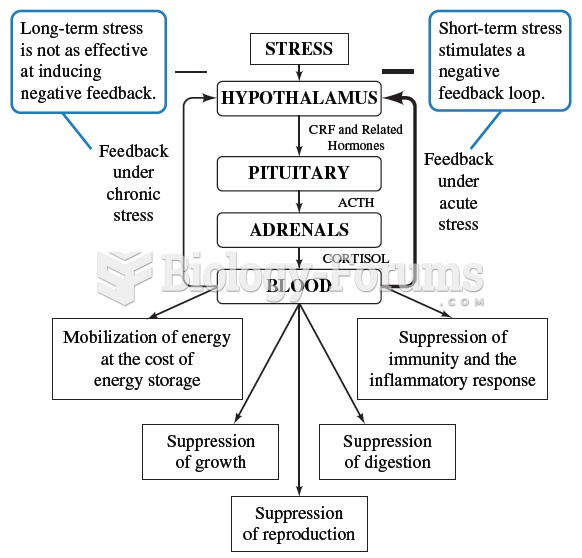This topic contains a solution. Click here to go to the answer
|
|
|
Did you know?
The word drug comes from the Dutch word droog (meaning "dry"). For centuries, most drugs came from dried plants, hence the name.
Did you know?
Amphetamine poisoning can cause intravascular coagulation, circulatory collapse, rhabdomyolysis, ischemic colitis, acute psychosis, hyperthermia, respiratory distress syndrome, and pericarditis.
Did you know?
In the United States, there is a birth every 8 seconds, according to the U.S. Census Bureau's Population Clock.
Did you know?
If you could remove all of your skin, it would weigh up to 5 pounds.
Did you know?
The lipid bilayer is made of phospholipids. They are arranged in a double layer because one of their ends is attracted to water while the other is repelled by water.
 Mammals posses a number of physiological pathways related to stress. One example is the hypothalamic
Mammals posses a number of physiological pathways related to stress. One example is the hypothalamic
 U.S. suburbs were once unplanned, rambling affairs that took irregular shapes as people moved away ...
U.S. suburbs were once unplanned, rambling affairs that took irregular shapes as people moved away ...





